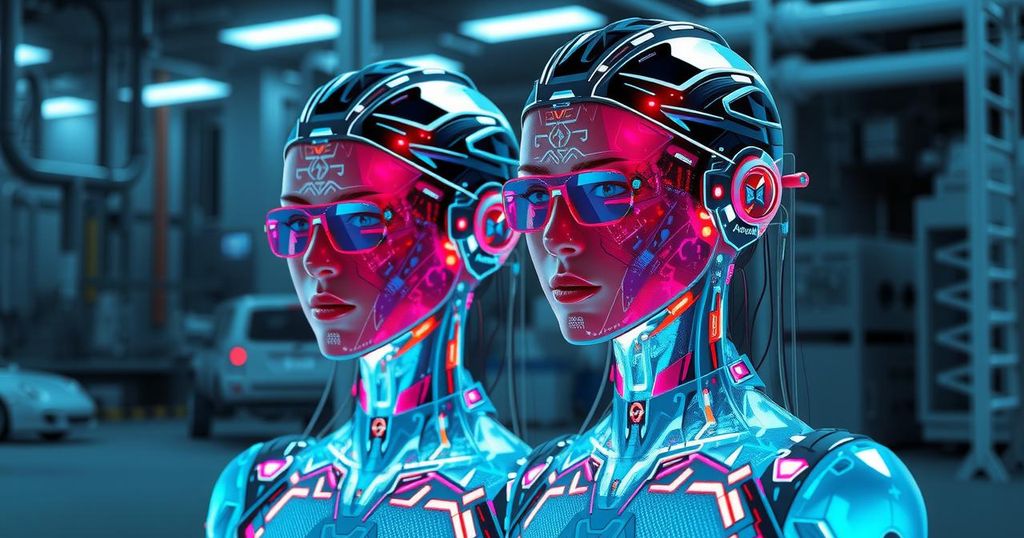Harnessing the Power of Digital Twins in Intelligent Industries
Digital twins, virtual replicas of physical objects, drive innovation across sectors like automotive, manufacturing, healthcare, smart cities, and agriculture. They enhance efficiency by predicting issues, optimizing operations, and improving outcomes. Major industries leverage this technology for precision farming, urban planning, and healthcare advancements, signifying a shift towards intelligent industries worldwide.
In the fast-moving landscape of technology transformation, digital twins emerge as the game-changers across various sectors. By creating virtual replicas of physical entities, industries harness their power to optimize operations and enhance decision-making. The automotive sector thrives on these advancements, using them to monitor electric vehicle components in real time. Manufacturing, healthcare, and smart cities quickly follow suit, leveraging digital twins to streamline processes, improve outcomes, and navigate environmental challenges, thus enhancing everyday lives. In agriculture, this innovative technology promises to modernize practices and secure food resources for the future.
A digital twin is a virtual counterpart of a physical entity, enabled by technology that monitors its performance through real-time data. As the manufacturing industry adapts to these virtual insights, OEMs are leading the charge, particularly in automotive production where the market share for digital twins exceeds 15%. Major players utilize them to preemptively address issues, elevating vehicle safety and performance.
In the manufacturing realm, organizations embrace virtual models to replicate production lines and factories. A global aviation leader claims 99.9% predictive accuracy with digital twins in monitoring jet engine anomalies, while a manufacturing company reported a staggering 75% reduction in defective products. An oil firm deploying these models claims savings of up to US$1 million per day by fine-tuning drilling processes.
Healthcare is equally transformative, as a medical center in the U.S. crafts digital replicas of patients’ kidneys for better surgical training and outcomes. Innovations from India illustrate how heart models assist in non-invasive treatment evaluations. Surgeons wield digital twins to simulate complex procedures, driving precision and minimizing errors in the operating room.
Further afield, smart cities tap into digital twins to analyze human behavior and urban dynamics, aiding in efficient city planning and disaster management. The Survey of India is pioneering digital twin technology, creating lifelike representations of cities to improve governance. Initiatives like Sangam leverage AI and 5G to integrate advanced technologies into infrastructure projects.
Lastly, agriculture stands on the precipice of a digital revolution, where precision farming flourishes through data-rich insights from virtual crop models. Farmers gain the ability to optimize resources, predicting equipment failures or crop health with remarkable accuracy. As agriculture anchors the Indian economy, these advancements are poised to enhance sustainability and food security, a lifeline for millions.
Digital twins revolutionize industries by creating digital replicas of physical objects, systems, or processes. This technological innovation enables companies to simulate, analyze, and optimize their operations dynamically. Diverse applications across sectors like automotive, healthcare, manufacturing, infrastructure, smart cities, and agriculture demonstrate the versatility and transformative potential of digital twins. Connectivity, data standardization, and advanced technologies are crucial for their effective implementation, ensuring that industries respond proactively to emerging challenges.
Digital twins represent a formidable leap in industrial technology, reshaping the landscape across various sectors. From automotive and manufacturing to healthcare and agriculture, their applications underline a common theme: enhanced efficiency, safety, and decision-making. As industries increasingly adopt this innovative approach, the prospect of a more interconnected and intelligent world is not just a dream, but a tangible reality ahead.
Original Source: www.ey.com




Post Comment